Manned-Unmanned Teaming Market by Technology (AI, Autonomy, Sensor Integration), Platform (Ground, Aerial, Naval), Offering (Hardware, Software, Services), Application (Surveillance, Combat Operations, Logistics), End-Use Industry (Defense, Commercial, Government) and Region – Global Forecast to 2030
Manned–Unmanned Teaming (MUM-T) represents a transformative collaboration between human-operated and autonomous systems across various domains such as defense, logistics, and surveillance. The integration of artificial intelligence (AI), advanced sensor technology, and communication networks has made MUM-T a cornerstone in modern combat and commercial operations.
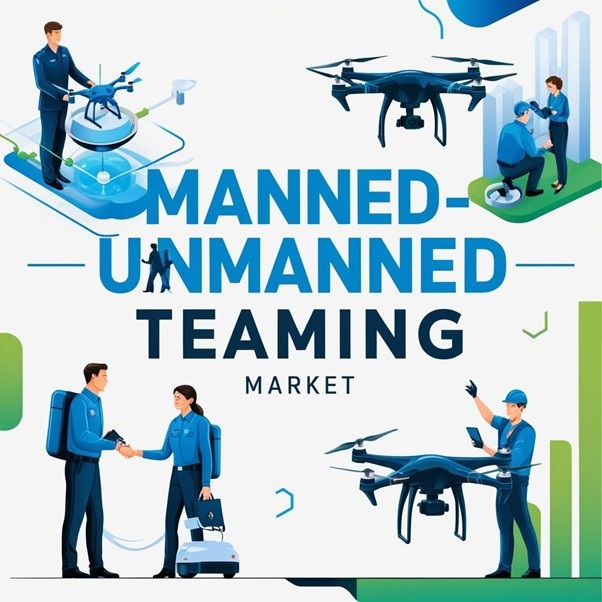
The MUM-T market is poised for exponential growth driven by rising demand for integrated systems, technological advancements in autonomy, and increasing defense budgets. North America leads the global market due to its technological innovations and military modernization efforts, while Asia-Pacific is emerging as a high-growth region.
Attractive Opportunities
-
Enhanced Combat Capabilities:
The fusion of manned and unmanned systems enables dynamic battlefield coordination, enhanced decision-making, and superior operational outcomes, reducing the risk to human lives. -
Cost-Efficiency in Military Operations:
Adoption of unmanned platforms in logistics and surveillance reduces operational costs and increases mission efficiency, creating opportunities for stakeholders. -
Technological Innovation:
Emerging technologies like AI, machine learning, and 5G networks are enabling more effective manned-unmanned collaborations, enhancing real-time communication and decision-making.
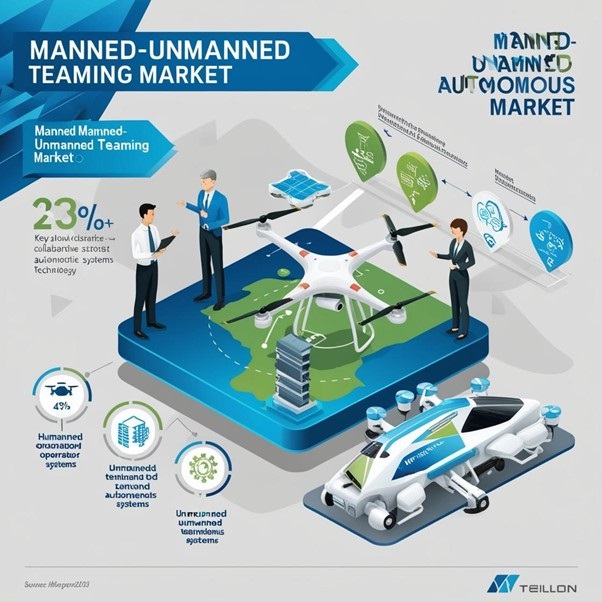
Expansion in Commercial Applications:
Beyond defense, MUM-T has applications in industries like agriculture (drones for monitoring), logistics (autonomous delivery), and disaster response, creating a diverse opportunity
Global Market Dynamics
-
Drivers:
- Growing investment in defense technologies.
- Increased demand for unmanned platforms for surveillance and reconnaissance.
- Technological advancements in AI, autonomy, and sensor fusion.
-
Restraints:
- High initial investment costs.
- Regulatory and ethical challenges related to autonomous systems.
-
Opportunities:
- Integration with emerging technologies like quantum computing and 6G networks.
- Expansion in civilian applications, including border security and disaster management.
-
Challenges:
- Ensuring seamless communication and interoperability between manned and unmanned systems.
- Addressing cybersecurity vulnerabilities in networked systems.
Global Market Ecosystem Analysis
The MUM-T ecosystem involves multiple stakeholders, including technology providers, integrators, defense contractors, and governmental agencies. Key components of this ecosystem include:
- Technology Providers: Developers of AI, autonomy, and sensor systems.
- Defense Contractors: Entities responsible for integrating MUM-T systems into military operations.
- Regulatory Bodies: Organizations ensuring compliance with safety and ethical standards.
The ecosystem is characterized by close collaboration between public and private sectors to accelerate innovation and deployment.
Recent Developments of Market
- AI-Driven Advancements: Companies like Boeing and Lockheed Martin have introduced AI-enabled systems that enhance real-time decision-making in MUM-T applications.
- Autonomy in Naval Operations: Unmanned underwater vehicles (UUVs) are being developed to collaborate with manned submarines for reconnaissance missions.
- Global Partnerships: Increased international collaborations for technology sharing, particularly among NATO allies.
- Commercial Applications: Companies like Amazon and UPS are exploring MUM-T solutions for autonomous delivery systems.
Key Market Players
- Lockheed Martin Corporation (US): Leader in MUM-T integration for military applications.
- Northrop Grumman Corporation (US): Pioneer in autonomous systems and AI integration.
- Airbus SE (Europe): Innovator in aerial MUM-T platforms for both defense and commercial sectors.
- Boeing (US): Developer of advanced MUM-T technologies for combat operations.
- Thales Group (France): Specialist in sensor integration and real-time communication systems.
Scope of the Report
- Technology Trends: Analysis of AI, IoT, autonomy, and sensor fusion.
- Platform-Based Insights: Coverage of ground, aerial, and naval MUM-T platforms.
- Regional Analysis: Insights into key markets, including North America, Europe, Asia-Pacific, and the Middle East.
- End-Use Applications: Exploration of defense, commercial, and government use cases.
- Forecast and Growth Analysis: Detailed projections from 2024 to 2030.
Frequently Asked Questions (FAQs):
What is Manned–Unmanned Teaming (MUM-T)?
MUM-T refers to the collaboration between manned and unmanned systems to enhance mission efficiency and operational safety.
What are the key drivers of the MUM-T market?
Increasing demand for advanced combat systems, AI integration, and cost-efficiency in operations are major growth drivers.
Which region leads the MUM-T market?
North America dominates the market due to technological advancements and significant defense investments.
What are the challenges in adopting MUM-T systems?
High costs, regulatory hurdles, and cybersecurity concerns pose challenges to widespread adoption.
Who are the leading players in the MUM-T market?
Major players include Lockheed Martin, Northrop Grumman, Airbus, Boeing, and Thales Group.

Global Market Dynamics
-
Drivers:
- Growing investment in defense technologies.
- Increased demand for unmanned platforms for surveillance and reconnaissance.
- Technological advancements in AI, autonomy, and sensor fusion.
- Restraints:
- High initial investment costs.
- Regulatory and ethical challenges related to autonomous systems.
- Integration with emerging technologies like quantum computing and 6G networks.
- Expansion in civilian applications, including border security and disaster management.
- Ensuring seamless communication and interoperability between manned and unmanned systems.
- Addressing cybersecurity vulnerabilities in networked systems.
- Opportunities:
- Challenges:
Global Market Ecosystem Analysis
The MUM-T ecosystem involves multiple stakeholders, including technology providers, integrators, defense contractors, and governmental agencies. Key components of this ecosystem include:
- Technology Providers: Developers of AI, autonomy, and sensor systems.
- Defense Contractors: Entities responsible for integrating MUM-T systems into military operations.
- Regulatory Bodies: Organizations ensuring compliance with safety and ethical standards.
The ecosystem is characterized by close collaboration between public and private sectors to accelerate innovation and deployment.
Recent Developments of Market
- AI-Driven Advancements: Companies like Boeing and Lockheed Martin have introduced AI-enabled systems that enhance real-time decision-making in MUM-T applications.
- Autonomy in Naval Operations: Unmanned underwater vehicles (UUVs) are being developed to collaborate with manned submarines for reconnaissance missions.
- Global Partnerships: Increased international collaborations for technology sharing, particularly among NATO allies.
- Commercial Applications: Companies like Amazon and UPS are exploring MUM-T solutions for autonomous delivery systems.
Key Market Players
- Lockheed Martin Corporation (US): Leader in MUM-T integration for military applications.
- Northrop Grumman Corporation (US): Pioneer in autonomous systems and AI integration.
- Airbus SE (Europe): Innovator in aerial MUM-T platforms for both defense and commercial sectors.
- Boeing (US): Developer of advanced MUM-T technologies for combat operations.
- Thales Group (France): Specialist in sensor integration and real-time communication systems.
Scope of the Report
- Technology Trends: Analysis of AI, IoT, autonomy, and sensor fusion.
- Platform-Based Insights: Coverage of ground, aerial, and naval MUM-T platforms.
- Regional Analysis: Insights into key markets, including North America, Europe, Asia-Pacific, and the Middle East.
- End-Use Applications: Exploration of defense, commercial, and government use cases.
- Forecast and Growth Analysis: Detailed projections from 2024 to 2030.
Frequently Asked Questions (FAQ)
-
What is Manned–Unmanned Teaming (MUM-T)?
MUM-T refers to the collaboration between manned and unmanned systems to enhance mission efficiency and operational safety. -
What are the key drivers of the MUM-T market?
Increasing demand for advanced combat systems, AI integration, and cost-efficiency in operations are major growth drivers. -
Which region leads the MUM-T market?
North America dominates the market due to technological advancements and significant defense investments. -
What are the challenges in adopting MUM-T systems?
High costs, regulatory hurdles, and cybersecurity concerns pose challenges to widespread adoption. -
Who are the leading players in the MUM-T market?
Major players include Lockheed Martin, Northrop Grumman, Airbus, Boeing, and Thales Group.
Table of Contents
1. Executive Summary
1.1 Overview of the Market
1.2 Key Findings
1.3 Market Trends and Insights
2. Introduction
2.1 Research Objectives
2.2 Market Definition and Scope
2.3 Research Methodology
2.4 Assumptions and Limitations
3. Market Overview
3.1 Definition and Evolution of Manned–Unmanned Teaming (MUM-T)
3.2 Applications and Benefits of MUM-T
3.3 Market Structure and Ecosystem
4. Attractive Opportunities in the Market
4.1 Technological Advancements Driving Growth
4.2 Emerging Applications in Defense and Commercial Sectors
4.3 Regional Opportunities in High-Growth Markets
5. Market Dynamics
5.1 Drivers
- Growing Demand for Advanced Military Technologies
-
Integration of AI and Autonomous Systems
5.2 Restraints - High Initial Costs of Implementation
-
Regulatory and Security Challenges
5.3 Opportunities - Expansion into Civilian and Commercial Applications
-
Advancements in Sensor and Communication Technologies
5.4 Challenges - Cybersecurity Risks in Networked Systems
- Interoperability Issues
6. Technology Analysis
6.1 AI and Autonomy in MUM-T Systems
6.2 Sensor Integration Technologies
6.3 Emerging Trends in Communication Protocols
7. Platform Analysis
7.1 Ground Platforms
7.2 Aerial Platforms
7.3 Naval Platforms
8. Offering Analysis
8.1 Hardware
8.2 Software
8.3 Services
9. Application Analysis
9.1 Surveillance and Reconnaissance
9.2 Combat Operations
9.3 Logistics and Supply Chain Management
10. End-Use Industry Analysis
10.1 Defense Sector
10.2 Commercial Applications
10.3 Government and Public Sector
11. Regional Analysis
11.1 North America
- Market Trends and Forecast
-
Key Players and Investments
11.2 Europe
11.3 Asia-Pacific
11.4 Middle East and Africa
11.5 Latin America
12. Competitive Landscape
12.1 Market Share Analysis of Key Players
12.2 Competitive Strategies and Developments
12.3 Partnership and Collaboration Trends
13. Recent Developments in the Market
13.1 Technological Breakthroughs
13.2 Key Product Launches
13.3 Strategic Partnerships
14. Key Market Players
14.1 Lockheed Martin Corporation
14.2 Boeing
14.3 Airbus SE
14.4 Northrop Grumman
14.5 Thales Group
14.6 Other Prominent Players
15. Scope of the Report
15.1 Scope and Market Segmentation
15.2 Period of Analysis
15.3 Research Approaches
16. Frequently Asked Questions (FAQ)
16.1 What is the expected growth rate of the MUM-T market?
16.2 Which region dominates the MUM-T market?
16.3 What are the key applications driving market growth?
16.4 Who are the leading market players?
16.5 What are the technological trends influencing the market?




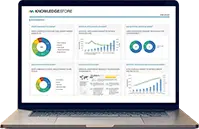








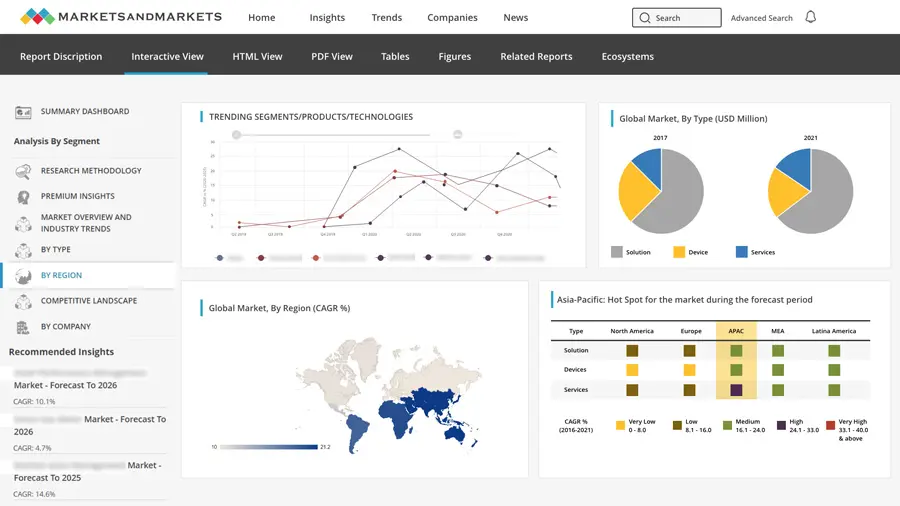
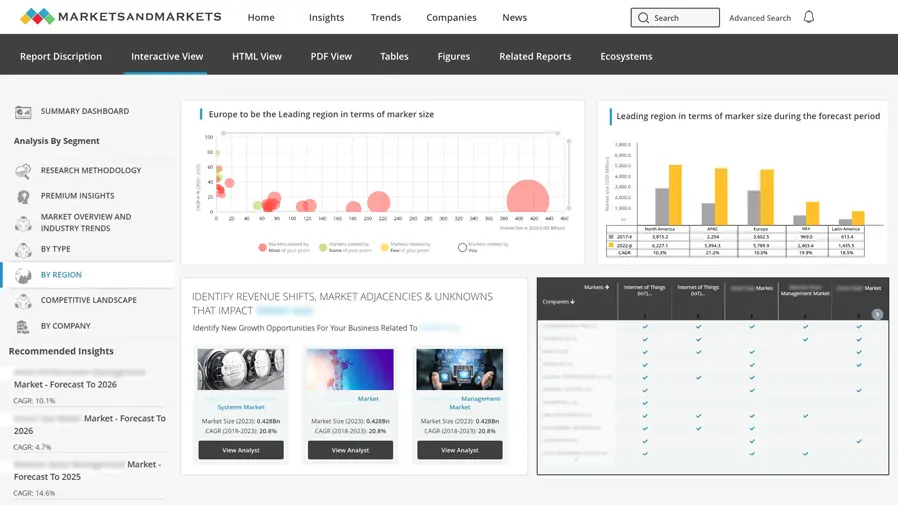
Growth opportunities and latent adjacency in Manned-Unmanned Teaming Market